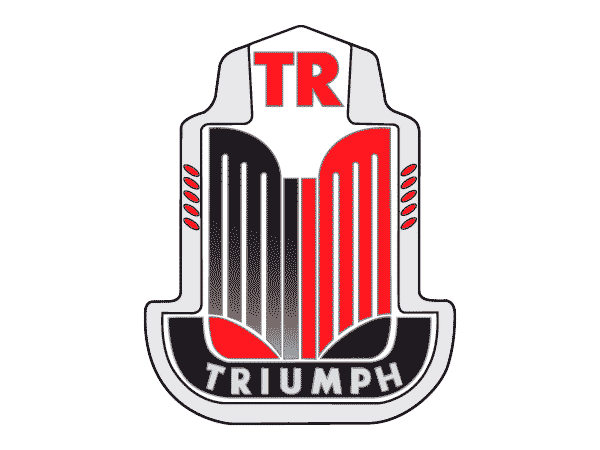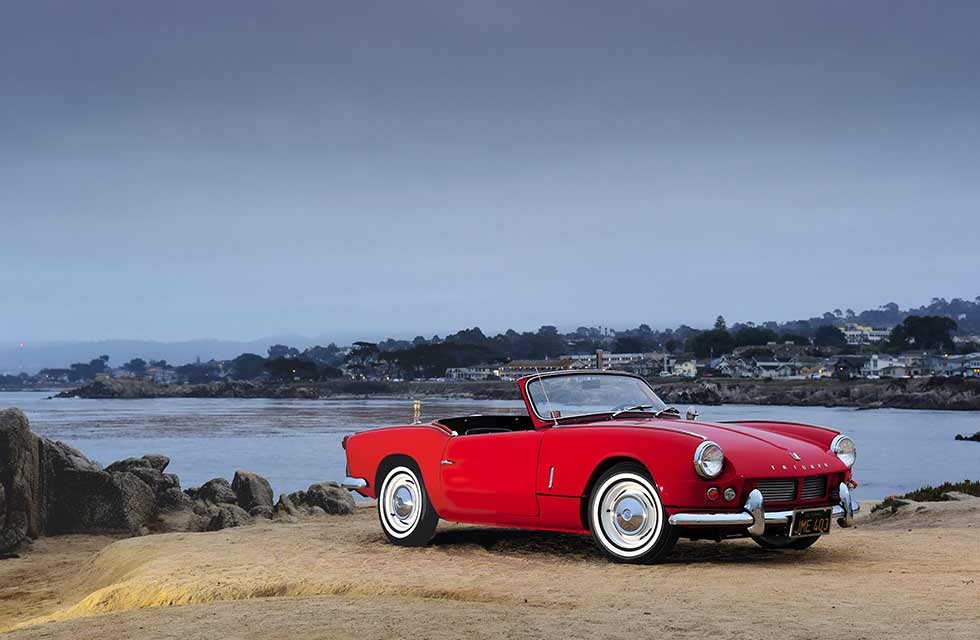
Spit And Polish. The Triumph heirloom passed from father to son and resurrected… twice! Texas Hold ’EM. From race-winner to concours star, via two rebuilds and a horrific crash, this Triumph Spitfire has quite a tale to tell. Words Greg MacLeman. Photography Will Williams.
“Dad used it extensively in gymkhana and autocross events, and won the Texas regional championship in 1964 and 1965”
You soon become numb to the conspicuous consumption that marks out Monterey Car Week, with its exclusive parties, hypercar tours and record-setting auction results. But if ever there was a welcome tonic to the excesses of America’s best car show it’s the ’1964 Triumph Spitfire 4 of Barry Connally. The quintessential affordable sports car, with its rasping exhaust note and beautiful lines, is a true breath of fresh air in a place where wealth seems as native as the Spanish moss dripping from the trees. Despite leaving behind the throttle-blipping nouveau riche for the relative calm of middle-America Pacific Grove, Connally’s Spitfire still draws admirers – many who could tell the difference between a McLaren 570S and a 640LT at 50 paces, but to whom the original Spitfire – with its low bumpers and delicate, jewel-like styling – remains a mystery.
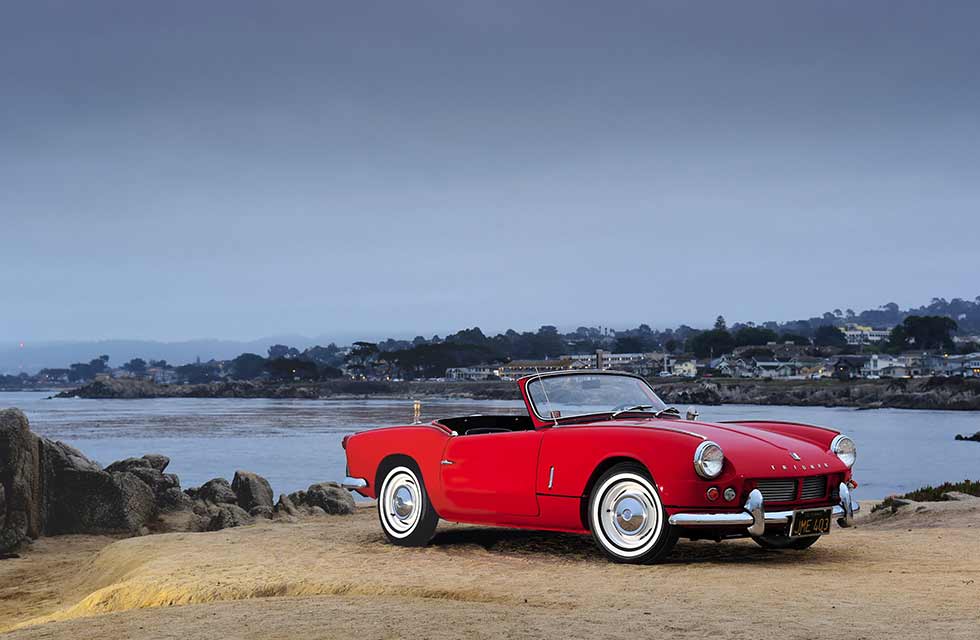
It’s easy to understand why, when you think about how rare a sight an early Spitfire is. In 1992, the Triumph Sports Six Club told C&SC’s Jon Presnell it knew of just three examples in the UK – a remarkable statistic when you consider the continued prevalence of the Frogeye Sprite, produced in similar numbers. Of the 45,000 Mkl Spitfires built from 1962 to ’1965, more than half made their way to the New World, but even here they’re markedly uncommon.
Given the Spitfire’s forward-thinking design, that comes as a surprise. Designers at Canley had their sights set firmly on the Austin-Healey Sprite from its first appearance in 1958, aiming to improve upon a recipe that was becoming hugely successful on both sides of the Atlantic. After a bumpy gestation that nearly saw the Michelotti-styled prototype consigned to life under a dust sheet, a revised production model eventually broke cover in 1962.
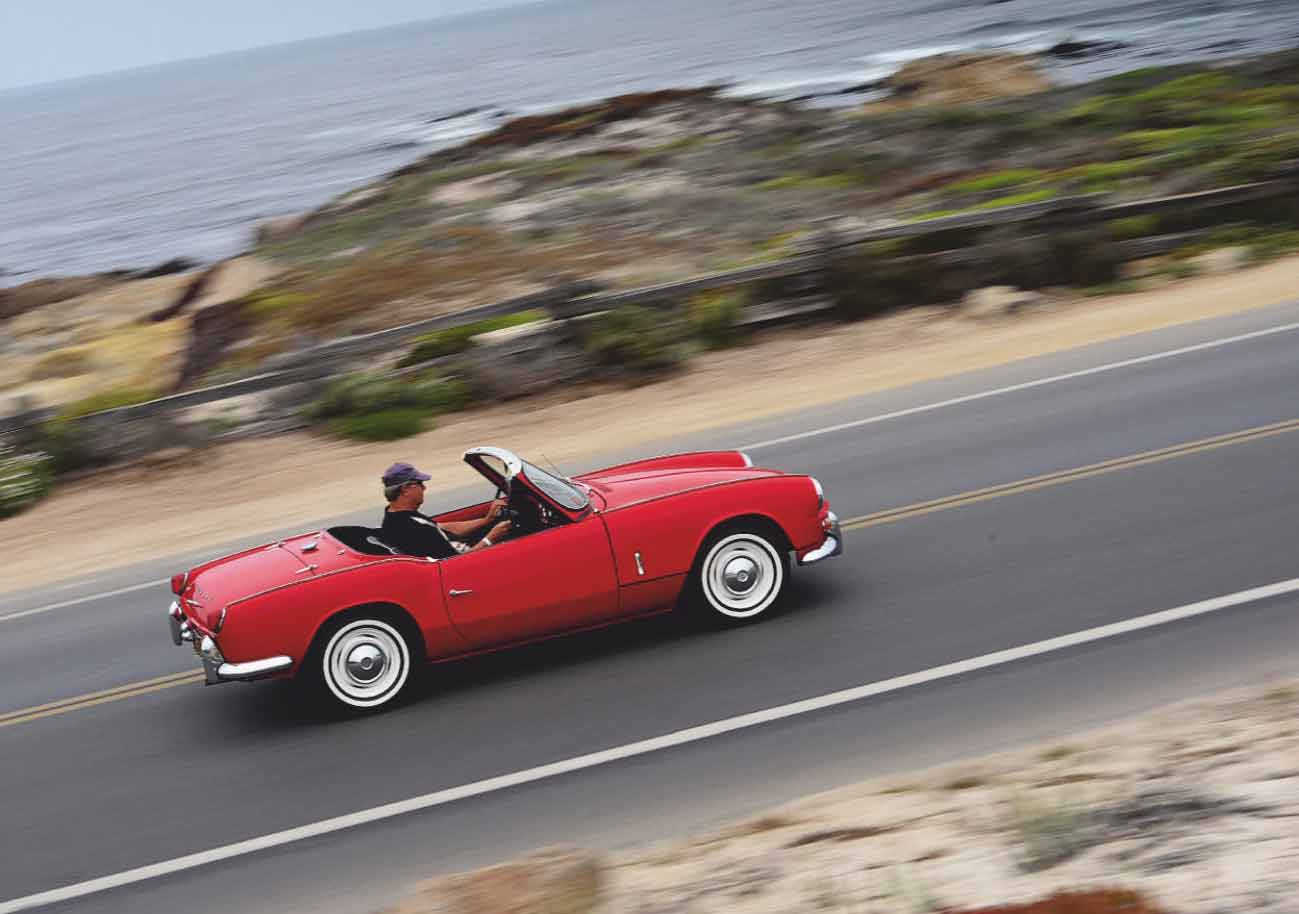
Straight away, the advantages over the austere Spridget were plain to see, not least in terms of styling. Raised door heights made ‘keep fit’ windows a possibility – a luxury for those raised with sidescreens – and there was more room, too, thanks to reworked Herald underpinnings. The Spitfire used a modified and shortened backbone chassis based on that of its stablemate, which, when paired with strengthened sills, allowed the seats to be mounted much lower in the body for a more sporting driving position. A beautifully sculpted clamshell bonnet offered unparalleled access to a 1147cc pushrod ‘four’ that pipped the ’61 Spridget for outright capacity and performance, producing a healthy 63bhp and edging its rival to the tune of 8bhp. The result was a machine capable of achieving a top speed in excess of 90mph, the 0-60mph dash in just over 15 secs, and endowed with clean styling that looked as at ease on Carnaby Street as it did outside the Canley Social Club.
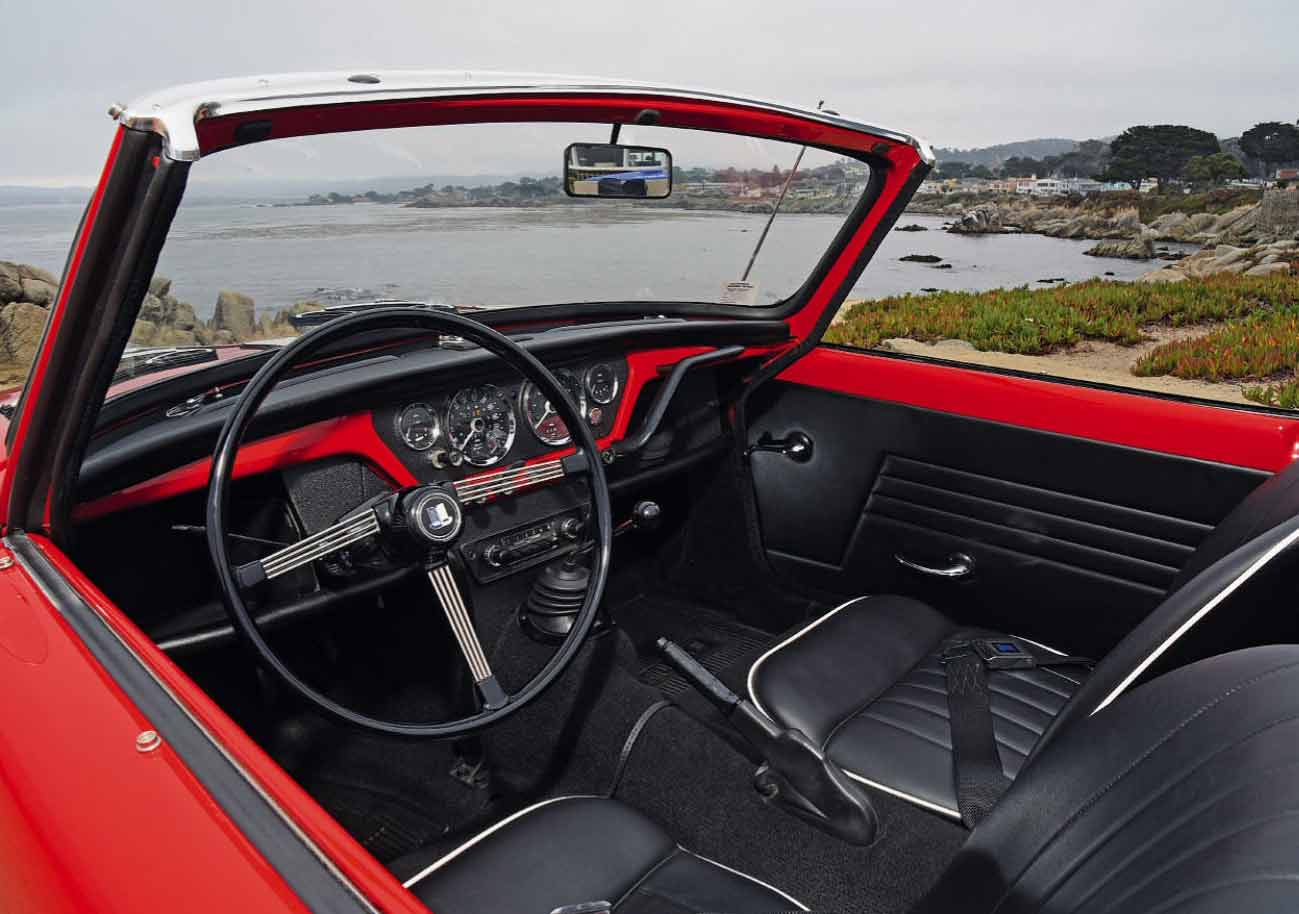
Impressive performance figures offered great bragging rights in the bar room, and proved irre-sistible to club racers such as Texan HC Connally, who abandoned the Healeys of his earlier SCCA campaigns and headed straight for the Triumph showroom in 1962.
“My dad always liked the Spitfire and bought a white one in 1962 that he thrashed to death – but he loved it,” says Connally, beaming at the memory. “He ended up buying this car – a ’1964 model with optional overdrive – to replace it, and raced it extensively in gymkhana and autocross events in Texas. He won the Texas regional championship in 1964 and ’1965, topping his class in this car, and came first overall in Carroll Shelby’s Terlingua Challenge. Shelby had a great big 500,000-acre ranch out in west Texas, and every year he invited people out. He was a good ol’ boy – we’d just run out on the roads, kill our cars, and try not to kill ourselves!”
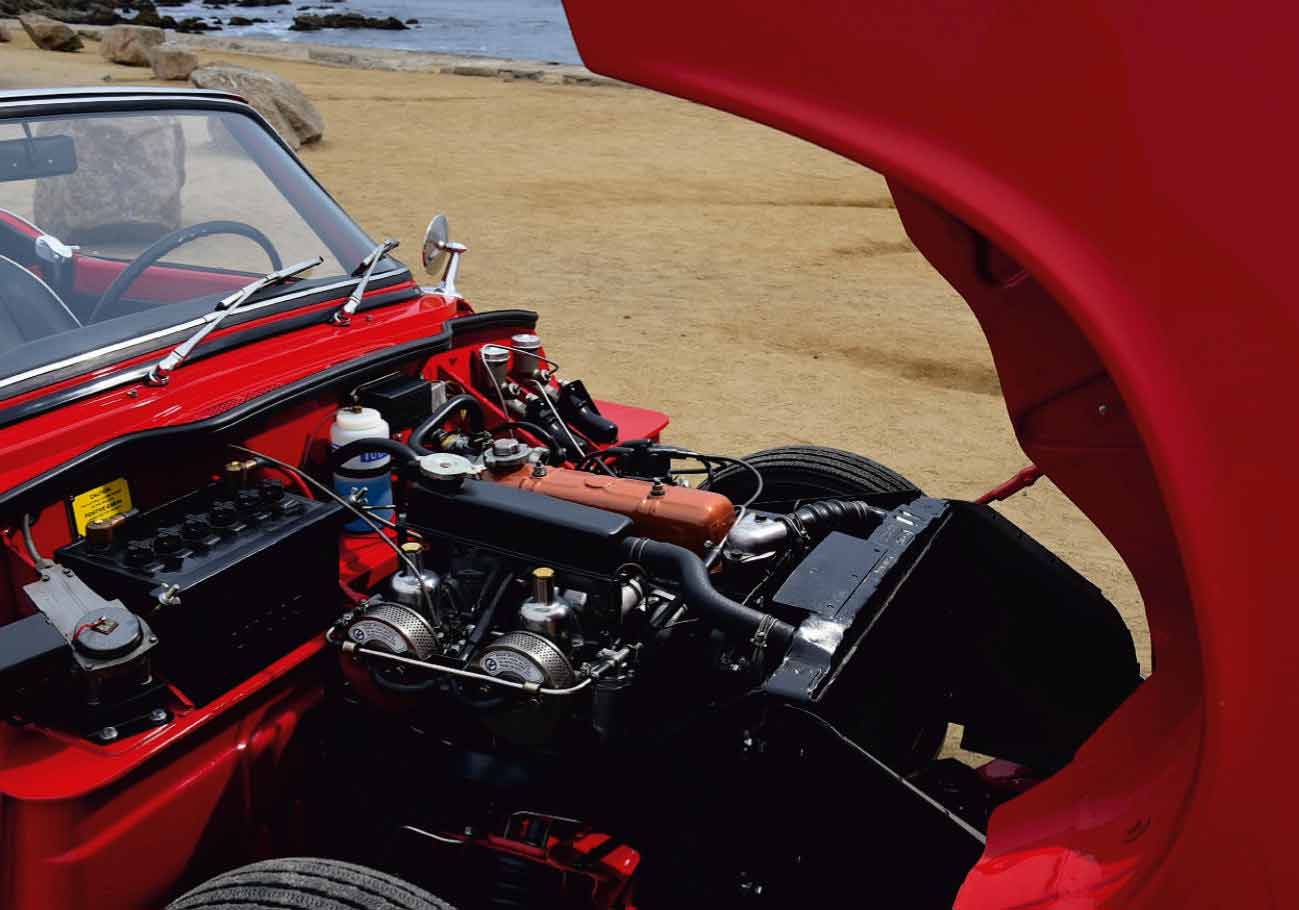
For a number of years, Connally senior diced with Sprites, MGBs and, for a time, Datsun 1500s, in standard classes where no modifications were allowed: “He competed almost every weekend, and always seemed to be somewhere racing something. He won most of the time.” With the Spitfire proving less competitive and his second job as the owner of a Saab dealership offering easy access to cars, including Sonnet IIs and Ills, he retired the Triumph, parking it in his garage in 1968 and largely forgetting about it for three decades. “Other cars flowed through his hands over the years, but he always kept the Spit-fire,” remembers Connally. “In around 1999 he started to try to get the car back together but his health wasn’t great – he was in his 70s by then with back problems. I was still in the navy, but would come back to Dallas to help him work on it every couple of months. It was a great bonding experience. We finally got it to a stage where it wasn’t yet safe to drive on the street, but it would run. At that point he gave me the car, so I brought it back to California in 2005.”
In San Diego, Connally set about finishing what he and his father had started. “I did all the disassembly myself, stripping the car down to the chassis in my garage,” he explains. “I grew up with the Spitfire so I was very familiar with what was right and what was wrong with it -1 was nine when my dad bought the Triumph and he put me to work straight away, changing the oil and balancing the carburettors. The hardest part was dealing with the all the grease, grime and nasty stuff that had accumulated over the years. The car itself was all together and complete, but was beaten to death from a life of racing and had deteriorated considerably over the years.”
Because the Spitfire had been campaigned in a stock class, the machine was as it was when it left Canley in 1964, bound for the States: “The only modifications he made were to take out the grille and put in driving lights, and instead of a camber compensator to prevent wheel tuck, the old racer trick was to run a length of chain from the top to the bottom of the rear shock. Fortunately he kept the original grille pieces; I decided to keep the chain in homage to my dad.

“When I got hold of the Triumph the radio was missing, replaced with switches for the foglights, and the original banjo steering wheel had been swapped for a larger, two-spoke version that gave him more leverage when he was racing.” Incredibly, the original wheel was later found in the garage, a time capsule from when the car was entombed in 1968.
Connally tackled most of the restoration at home, using the skills he learned as a boy. Minor bodywork was taken on along with a full engine rebuild, while specialist help was drafted in for the respray and machine work, including Magnafluxing the cylinder head. Parts supply was plentiful, yet not without its challenges: “I’d order a part from one company and it wouldn’t be the right one. So I’d order from another company and it still wouldn’t be right! I ended up buying parts from three or four different suppliers in the hope that one would be correct. I re-used maybe 80% of the car’s components, and the parts that I replaced were mostly consumables – though I did also add a new loom and wiring, just to be safe.
“I wanted to fit genuine Lucas headlamps and found a guy from Malta, of all places, who had four of them, so I bought all four. I have a pair stored in their boxes for when these eventually burn out. None of the parts were too hard to find, with the exception of the tyres. I finally tracked down a set of Dunlops in the UK, which took six months to arrive, then found a company on the East Coast that could fit whitewalls.” The fancy tyres were an option in the US market, and one that his father selected when he ordered the Triumph in 1964.
After seven years of work, as and when time and money allowed, the car finally neared completion in 2011. A further eight months of fettling later, it was ready for the road. “I didn’t carry out the restoration with the intention of showing it, but was convinced by someone who has come to be a great friend,” says Connally, carefully peeling back the blue tape that protects the immaculate wheelarches from stone-chips. “I entered it in shows and it did very well, to my surprise, regularly beating cars worth 10 times as much – that’s very satisfying.” The car went on to grace show fields up and down the West Coast and as far south as Texas, picking up awards at prestigious concours including The Quail: AMotorsports Gathering – until one day, in May 2016, that nearly cost Connally his life.
“I was driving through Los Angeles when a Chevrolet Suburban in front of me hit the brakes at an intersection,” he says with some hesitation. “It was either be decapitated by the Chevy or swerve into the median and hit a signpost – so I did that. It totalled the Spitfire, and very nearly totalled me.” The damage was considerable, destroying the bonnet and smashing the nose of the car. The radiator was driven into the engine, while the front chassis legs were badly bent.
Unbowed, Connally set about a second restoration, this time with an eye on concours success. “I didn’t pay a lot of attention to making sure everything was absolutely correct the first time round, and there were some things I knew were wrong,” he admits. “I took the accident as an opportunity to fix those – things such as the nuts and bolts I’d used, the ignition leads and coil. It had incorrect aluminium steering-rack clamps and a thicker anti-roll bar, so I got rid of those.”
The Triumph enthusiast again stripped the car down to its constituent components, separating the body from the chassis in his garage before once more enlisting the help of a specialist painter. “The biggest problem caused by the accident was the damage to the frame forks, which were both bent by more than 10°. Fortunately my painter is a bit of a master and managed to straighten the chassis by carefully applying tension and heat. I was afraid we were going to have to find another chassis, or butcher the original, but he managed to fix it.”
The visit to the specialist turned up another surprise when it was time for paint: “It’s Signal Red – paint code 32,” says Connally, “but when it came time to order the paint, he said, ‘This is the paint you should have, and this is what’s on there now.’ He put the two samples together and you could see that one was much more blue than the other. It’s now a much brighter red – when the sun shines it really pops.”
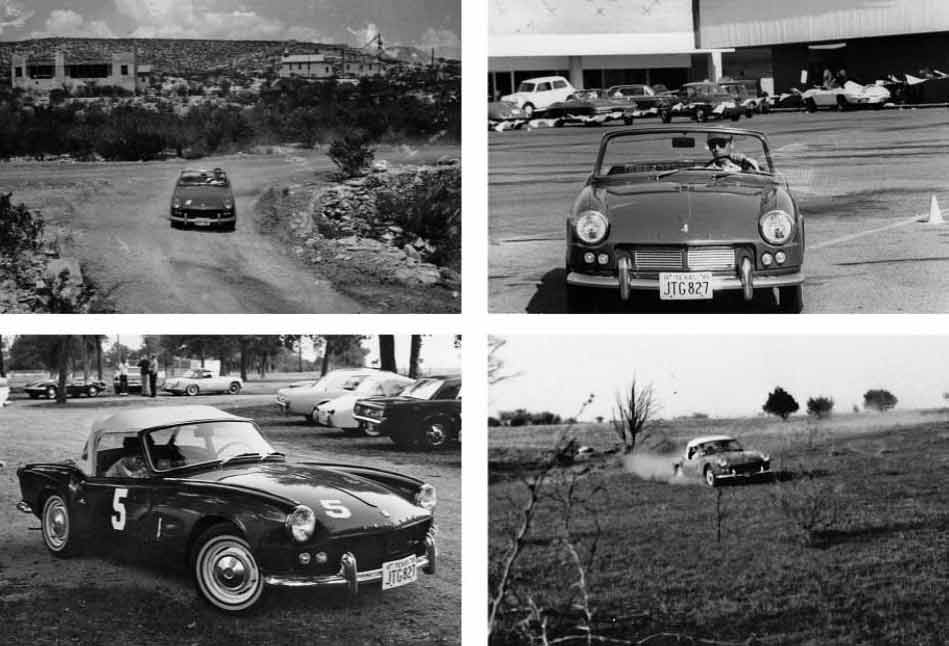
Beautifully finished, the Triumph had one tyre on the show field before it hit a problem: “I got everything back together, but for the life of me I couldn’t get it started. There was no reason for it not to, because the engine hadn’t been damaged in the crash.” Weeks of fruitless fettling and testing eventually gave way to revelation: “The force of the impact had caused the timing chain to skip a couple of links – it took me quite a while to figure out what had happened!” Years of dedication have resulted in quite possibly the world’s finest early Spitfire, but although immaculately presented, in concours-winning condition, JME 403 is no show queen: “I still use it, even after the accident. I’ve covered around 9000 miles since the first restoration, 1500 of those since I finished it the second time. I drive it all over the two-lane twisties of the hills and mountains in San Diego County -1 swap the steel wheels and crossply tyres for Minilites with radials, which completely transforms the character of the car. It’s a dream to drive there.”
Despite the show successes, it’s clear that Connally’s greatest pleasure comes from using the Triumph as its maker intended, and in a manner of which his race-ace father would have approved. “When I was a kid we’d take it out on the country lanes and he would slam it,” he says, eyes sparkling. “He was an excellent driver – we’d get out on those roads and he’d whip it around like it was nothing. Nowadays it doesn’t feel quite so fast, but back then, sitting in the passenger seat or perched on the back shelf, that odometer just seemed to spin round.”
“It was a case of be decapitated by the Chevy or swerve into the median and hit a signpost, so I did that – it totalled the car”

